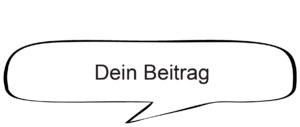

Letter
What is a Letter?
A letter is a written message conveyed from one person to another through a medium. Traditionally, letters were written on paper and delivered by hand or mail. In the modern era, the concept of letter writing has expanded to include electronic formats like emails and other digital communications, though traditional paper letters, often called snail mail, still hold personal and official significance.
History of Letter Writing
Letter writing is an ancient practice that dates back to the first recorded handwritten letter by the Persian Queen Atossa in around 500 BC. Historically, letters have been instrumental in personal relationships, political and military communications, and literary and artistic expression. As a form of communication, letter writing has evolved but the essence remains the same: to convey messages and emotions between individuals or groups.
Types of Letters
Letters can broadly be categorized into two types: formal and informal.
Formal Letters
Formal letters are used in professional and official communications. They follow a strict format, language, and etiquette. Examples include:
- Business Letters: These are used for professional correspondence between companies, clients, and other stakeholders.
- Official Letters: These letters are used for communication between government agencies or in any official capacity.
- Cover Letters: Submitted with job applications, these letters explain the applicant's credentials and interest in the position.
Informal Letters
Informal letters are personal communications between friends, family, or acquaintances. These letters are more relaxed in tone and format. Examples include:
- Friendly Letters: These are personal letters to keep in touch with friends and family.
- Thank You Letters: Sent to express gratitude for gifts, hospitality, or kindness.
Interactive Tasks
Quiz: Test Your Knowledge
What is the traditional medium used for writing letters? (Paper) (!Stone) (!Digital screens) (!Leaves)
| Term A | Letter |
| Term B | Formal |
| Term C | Informal |
| Term D |
| Letterwriting | What is the act of writing messages by hand on paper? |
| What modern digital form has partly replaced traditional letters? | |
| Formal | Which type of letter is used in professional communication? |
| Informal | Which type of letter is usually sent between friends and family? |
<quiz display=simple>
{Complete the text. |type="{}"}
In ancient times, letters were often written on { parchment } and delivered by { messengers } who traveled long distances. Today, many people prefer to send letters via { email } due to its instant delivery and ease of use.
</quiz>
Open Tasks
Easy
- Writing a Thank You Letter: Write a thank you letter to a friend who gave you a thoughtful gift.
Standard
- Analyzing Historical Letters: Study letters from a historical figure and analyze the language and content.
Difficult
- Creating a Mail Art Project: Design a creative mail art project using traditional letter elements.
Oral Exam
- Discuss the evolution of letter writing from ancient times to the present.
- Explain the differences and similarities between emails and traditional letters.
- Debate the relevance of letter writing in today's digital age.
OERs on the Topic
Links
Share - Discuss - Rate

MUSIC QUIZ










|
|



